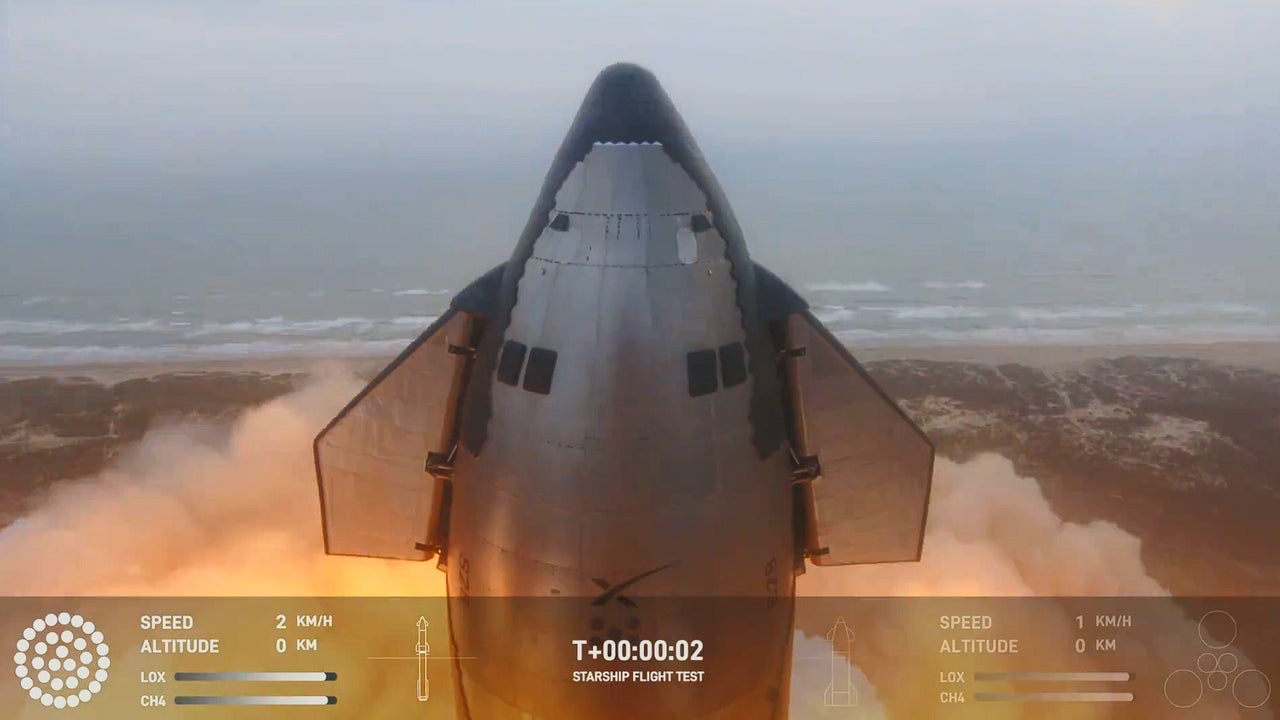SpaceX He succeeded on the third try. Starshipthe largest rocket ever built, has achieved take off and almost successfully complete its first flight. About an hour into the flight, which was supposed to last 64 minutes, SpaceX lost contact with the rocket. In the two previous attempts, the SpaceX rocket had exploded just minutes after takeoff.
The third test flight has begun at 14:22, Spanish peninsular time. Super Heavy, the booster, separated 3 minutes after takeoff, as planned, and landed in the Gulf of Mexico. Although Starship It is designed so that its two stages are reusable, it was not planned to recover any of the two stages of the rocket on this mission.
The launch date has not been assured until late yesterday, once the United States Federal Aviation Administration He gave his approval to takeoff. This was initially scheduled for 1:00 p.m., but was delayed 1 hour and 22 minutes due to the presence of some ships in the Gulf of Mexico where Super Heavy will crash.
Liftoff of Starship! pic.twitter.com/FaNcasuKaq
— SpaceX (@SpaceX) March 14, 2024
Between the goals This mission included testing the opening and closing of the rocket's cargo door, a demonstration of propellant transfer during the shore phase of the upper stage, the first firing of a Raptor engine in space, and a controlled reentry of Starship. It was also the first time that Starship's heat shield has been tested in an atmospheric re-entry.
Starship's Raptor engines have ignited during hot-staging separation. Super Heavy is executing the flip maneuver pic.twitter.com/T593ACilyD
— SpaceX (@SpaceX) March 14, 2024
As SpaceX has reported in its X account, the mission has been fulfilling its objectives except for restarting the engine during the flight, which was never attempted. A few minutes before the scheduled end of the flight, the broadcast from the Starship cameras was lost. Shortly after, Dan Huot, spokesperson for SpaceX, pointed out in the broadcast of the test flight carried out by the company that “The team has reported that the ship has been lost, so there will be no splashdown today”. SpaceX has not yet provided more details of what happened.
Starship re-entering Earth's atmosphere. Views through the plasma pic.twitter.com/HEQX4eEHWH
— SpaceX (@SpaceX) March 14, 2024
Starship is a key piece in the plans of the POT for the program Artemis that plans to take astronauts back to the Moon in 2026 and later to Mars. It is a two-stage rocket that, when docked Starship on Super Heavy, reaches a height of 121 metershas 9 in diameter and capacity to carry a payload of up to 150 tons.
The two previous attempts, in April and November 2023, lasted 4 and 8 minutes respectively, before the rocket exploded. In the first case, after failing the separation maneuver and beginning to spin uncontrollably, SpaceX activated the self-destruct mechanism. Separation was achieved on the second attempt, but several of the booster's 33 Raptor engines failed while a fire on Starship activated the flight termination system, causing the spacecraft to explode.

